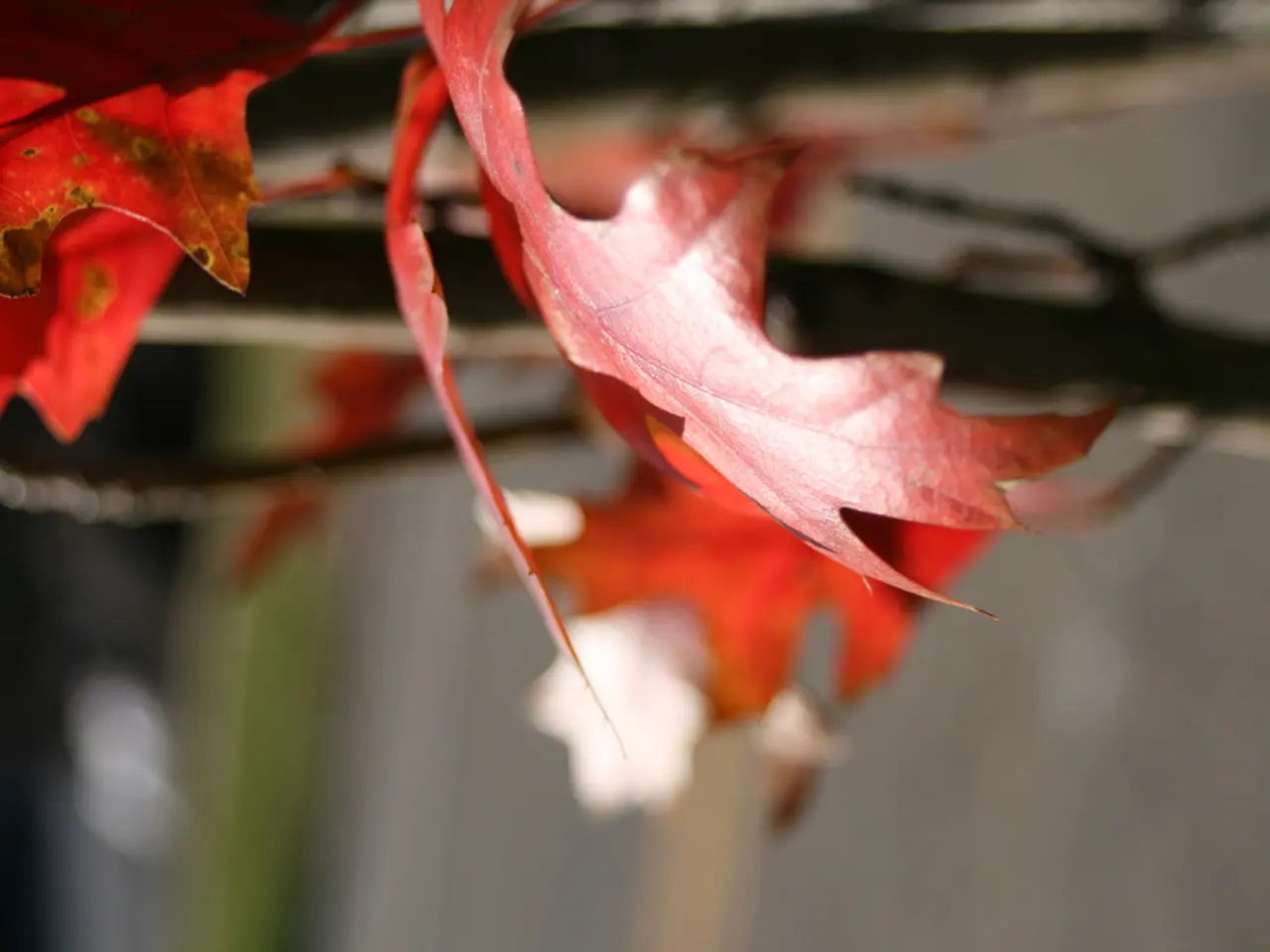Brown Japanese Maple Leaves: 4 Potential Causes Explained - Plus, Solutions to Revive Your Tree
Japanese maples, known for their vibrant foliage, can sometimes exhibit brown leaves due to various reasons. These trees are sensitive to environmental factors, especially delicate varieties with feathery leaves. High summer heat, strong winds, under- or over-watering, nutrient problems, and pest infestations can all contribute to browning leaves [1].
To maintain the health and beauty of your Japanese maple, it's essential to understand the common issues and take proactive steps to prevent them.
Heat or Wind Stress
Japanese maples are sensitive to intense sun and dry winds. To protect your tree, provide some afternoon shade. Mulching around the base can help retain soil moisture [1][2].
Watering and Feeding
Consistent watering is key to keeping your Japanese maple healthy. Ensure the soil remains moist but avoid waterlogging. It's best to water early in the day or during the early evening to prevent water from evaporating too quickly. Overfeeding can lead to nutrient imbalances, so use slow-release feed only once or twice a year [1].
Pests
Regularly inspect your Japanese maple for signs of insect damage or infestations. Common pests include aphids and spider mites, which can cause brown and distorted leaves [1]. Treat infestations with appropriate insecticidal soap or other pest controls, but be cautious as some products may cause leaf damage if misapplied [1][4].
Pot Bound Japanese Maples
If your potted Japanese maple is wilting, even after watering, and leaves are turning brown or yellow, it may be pot bound. Repotting should be done in late fall when the plant is dormant. Use a container that is a couple of inches wider in diameter, and consider teasing out any circling roots and pruning the plant lightly [3].
Fungal Issues
Improving air flow, watering correctly, and removing afflicted leaves can help with fungal issues on Japanese maples [5].
Japanese maples can thrive in containers, particularly those made of wood, especially larch, as long as they are well-draining [6]. With proper care, these trees can be cared for in small gardens despite initial perceptions of high maintenance [7].
[1] Gardening Know How. (2021). How to Care for a Japanese Maple Tree. Retrieved from https://www.gardeningknowhow.com/ornamental/trees/japanese-maple/how-to-care-for-a-japanese-maple-tree.htm
[2] The Spruce. (2021). Japanese Maple Care: 10 Expert Tips for Growing Japanese Maples. Retrieved from https://www.thespruce.com/how-to-grow-japanese-maples-1412407
[3] HGTV. (2021). How to Repot a Japanese Maple Tree. Retrieved from https://www.hgtv.com/outdoors/plants-flowers/how-to-repot-a-japanese-maple-tree
[4] The Spruce. (2021). Japanese Maple Pests: Identification & Control. Retrieved from https://www.thespruce.com/japanese-maple-pests-identification-control-3106506
[5] The Spruce. (2021). Japanese Maple Diseases: Identification & Treatment. Retrieved from https://www.thespruce.com/japanese-maple-diseases-identification-treatment-3106511
[6] The Spruce. (2021). Japanese Maple Care: 10 Expert Tips for Growing Japanese Maples. Retrieved from https://www.thespruce.com/how-to-grow-japanese-maples-1412407
[7] Gardening Know How. (2021). How to Care for a Japanese Maple Tree. Retrieved from https://www.gardeningknowhow.com/ornamental/trees/japanese-maple/how-to-care-for-a-japanese-maple-tree.htm
- To ensure a vibrant lifestyle for your Japanese maple, it's essential to address potential issues, such as heat and wind stress, watering and feeding problems, pest infestations, and fungal issues, as they can impact the health and beauty of your tree significantly.
- Proper care of Japanese maples, including providing shade, consistent watering, adequate feeding, regular pest inspections, timely repotting, and addressing fungal issues, makes it possible to grow these trees even in home-and-garden settings, debunking the myth of high maintenance.




